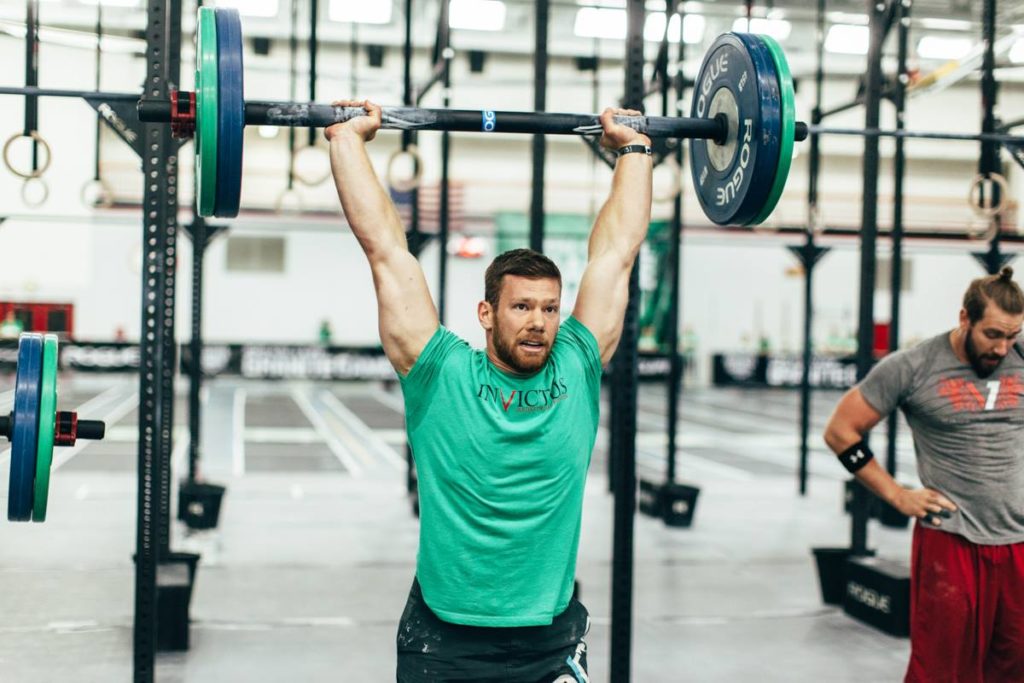
Mobility vs Stability
Written by Invictus Athlete Josh Littauer
If you have been in CrossFit for any amount of time you have probably had a coach at some point or another tell you to work on your mobility. Rightfully so, many of us sit at desks for multiple hours a day, drive in cars, sit in meetings, etc. that cause mobility issues and prevent us from moving through full ranges of motion. A topic that is talked about less frequently is stability. This is the discussion I would like to create, along with identifying whether more mobility or stability work would benefit for your fitness.
Let’s take a look at each (caveat: we will discuss here joint mobility and stability, not muscle fiber flexibility).
Joint Mobility: The ability to move a joint through it’s full anatomical and available range of motion.
Many of us fall into a category that shows a lack of mobility. This lack of mobility prevents athletes from achieving the full range of motion in a variety of movements from squatting, to pressing, pulling, and hinging. In the world of functional fitness, there is a lot of talk about standard ranges of motion that an athlete should be able to perform in a variety of movements. Being able to achieve the full range of motion in the functional movements not only prevents an athlete from getting “no repped”, but has tremendous benefits for seeing growth potential in strength, position, and skills. Below are a few examples.
Squatting: The age old question of how low should you squat is a debate that has been around for decades and the myth of squatting below parallel has only recently been deemed as safe and appropriate. In many cases however, the athlete simply cannot get themselves into the bottom position of the squat. This can be caused by any number of limitations from areas around your hips to deep into your ankles that simply prevent a full-depth squat.
Overhead pressing: Here is a classic example that tends to apply more to men than women. While pressing overhead, an athlete is able to lock out their arms, but cannot open their shoulders to finish with the bar in a good position overhead. It is common to see athletes open their rib cages and arch their backs in order to get the weight settled over the center of their body. This can cause even more problems as it is an imbalanced position in the shoulders, but also compromises an athlete’s lumbar spine.
Both of these examples are common in all fitness circles as big mobility issues that inhibit and athlete from achieving the full range of motion as well as potentially putting them in a jeopardizing their safety.
Joint Stability – The ability to resist movement in a joint from an outside force.
When is comes to stability, there are plenty of cases in an everyday gym setting where it would become necessary to add in stability work. These cases may be less obvious if you’re not looking for them, however they are still very present. The most common cases are seen during the Olympic lifts, squatting, pressing, and towards the end of workouts where fatigue sets in most. Having increased joint stability will prevent an athlete from over extending themselves or putting themselves in compromising position. When an athlete lacks joint stability it is often seen as hypermobility or the inability to maintain tension in a variety of positions. This lack of stability comes with an increased risk of injury as the muscles around the joint do not carry enough tension to take the strain off of the tendons and ligaments. Let’s take a look at several examples.
The Snatch: The snatch is seen as one of the most technical lifts in CrossFit and requires not only strength, but also coordination, athleticism, and stability. These things all come together at one moment to create a successful lift. The element of stability plays a large factor in the success of the lift, especially in the bottom of the catch position. In this bottom position the athlete is pushed down into the bottom of their squat position with the barbell securely overhead. In this bottom position, the athlete’s ankles, hips, and shoulders all must remain stable to maintain a good position and stand up with the barbell. However, those athletes with a lack of stability often have trouble keeping the barbell overhead and will typically collapse under the weight or allow the weight travel over their head.
Gymnastics: There are several examples in gymnastics that prove difficult for those with a lack of stability – most of these cases showing up in the shoulder girdle. Very simple examples are seen in toes-to-bar and kipping pull-ups. These movements force an athlete through aggressive flexion and extension and with a lack of stability will compromise the shoulder joint by placing excessive force on the joint itself. Another common example – and easily detected one – is an inability for an athlete to support themselves on the rings. Due to the increased freedom and degree of variability on the rings, superior stability must be shown throughout the body. It is often the case of a hypermobile athlete that when placed on a set of rings they immediately begin shaking and are unable to stay supported for any duration of time.
Both of these examples are common in nature and both have their own complications, however there are ways to treat both a lack of mobility and lack of stability.
If you have recognized yourself in any of the examples above then check out tomorrow’s post where you will find a few possible solutions for either your mobility or stability issues.
As always: Stay Humble. Stay Hungry.
Also Check Out…
Focus On Mechanics: The Single-Arm Deadlift
Three Reasons Why You Should Incorporate Unilateral Movements No Matter Who You Are